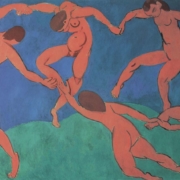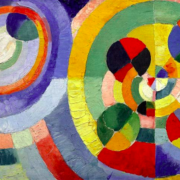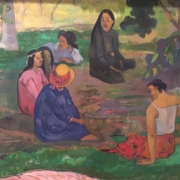Presentation, Clinical and training in Homogeneus Group
An introductory synthesis for this edition of Funzione Gamma
Request for dynamic group training in emerging and frontier areas today, is ever more frequent. These areas require interventions targeted at and limited by time; as Giannelli and Zucca write “to new requests, new responses”. Today, emerging institutions and pathologies do not accept long-term periods. In the public, moreover, work groups or therapy groups are often characterised by homogeneity. Homogenous can be the request of users (ex. family members of cardiopath patients or those with neoblastic diseases who meet to deal with changes, anxieties and distress provoked by the onset of the illness; persons who have undergone traumatic experiences and need to elaborate; members of a work group with a common training requirement), homogeneous can also be the diagnosis that characterises the group members (diagnosis of psychic, somatic or psychosomatic problems) homogeneous can be the genotype, the time of life to face (adolescence, old age) or specific problems of participants in the group work.
Homogenous groups are characterised by facility in dealing with fusional movement at all possible levels and increased slowness and resistance to movement towards individuation. Terminal groups instead make the limit become present; awareness of the limit requires elaboration of separation and this stimulates movement towards individuation, which inevitably reduces the stasis, at times defensive in relation to change, in the area of fusionality.
The characteristics resulting from homogeneity and from a predetermined temporal limit, as Giordana also points out, seem to be complementary and synergically permit the adequate use of a group-specific dialectic between fusion and individuation. They, in fact, allow to benefit from the sharing, cohesion and coherence that characterise the diverse fusional levels in a positive way and lay the grounds to make separation become present, from the very first session, thanks to the predefined time limit. Separation, having become thinkable stimulates movement towards individuation; separation and individuation, since they are shared, in the peer group become less distressing than in solitude. Moreover, since the peer group, according to Zucca Alessandrelli, “promotes energetic exchange and recalls primary pre-object transfert. All this revives the function of protective shield, between the internal and external, of the psychic apparatus”. Giannelli and Zucca Alessandrelli point out how a homogenous terminal group (in relation to the psycho-structural level of the participants characterised by a state of pathogenesis and by a fragile Self) is particularly functional in reinforcing the psychic apparatus and in relation to this have established a new short-term group therapy model: the GRF (Group for the Recovery of Functions).
The articles gathered for this edition of Funzione Gamma, stimulated by the research activity of the Associazione A.R.G.O. (Association for homogeneous group research) range from the area of training (Bruni, Corbella, De Luca, Fazio, Giordana, Marinelli, Zanasi) to the clinical area (Giannelli, Zucca, Alessandrelli, Micanti) and also comment on patients with serious organic pathologies. In this situation the main objective is, as Micanti writes, to learn to know the disease to be able to defend and acquire the courage to declare oneself “persona”, before that of being ill. In particular, as far as concerns clinical medicine De Luca illustrates how within a training experience in psycho-oncology “The discussion group aimed to supply the possibility of experimenting the fantasies and lived experiences revived by the oncological disease. The aim was also to highlight the need and possibility of integrating the technical aspects of the treatment and the psychic need of giving a sense to the experience”.
Each group, with a fixed termination or not, represents throughout its existence its own specific and unrepeatable history, nevertheless it would be correct to assume that dynamics that appear in a recurrent way in group life allow for generalisation in some way and to formulate hypotheses that can act as a guide to observe and understand what is occurring within a small group.
In particular, as Zanasi writes, “The experience offered by the analytical group allows to directly become aware of the conscious and unconscious aspects related to processes of personal and collective change within social organisations and institutions in which individuals, in their role, live, work, co-operate, and compete”.
To work analytically with a small group one must also keep in mind the influence on the object under observation of the observing subject, and therefore, in this case, influence on the group of the leader. Fazio in his writing carefully analysed the countertransfert of leaders who allow, “to shed light on the unconscious processes operating in the setting and favour a better understanding of what is occurring within the group of personnel”.
Particular attention paid to certain phenomena rather than others is correlated to the theoretical “pre-understanding1 of the leader, to his/her way of being persona and, as Rouchy (1998) recalls, also to elements belonging to the primary group of the analyst that have taken on a professional dimension, once they have been introduced into the secondary groups of belonging. This is why Rouchy justly considers important to try to specify the variables from which the organisation of the group processes are initiated, space within which interaction and also interpretation take on meaning as well as what is for the analyst a sort of “countertransfert”, or better transfert, I would say, anticipated in relation to the group which he/she then establishes, and groups which he/she has already established. Rouchy emphasises therefore the presence of unconscious elements, which also derive from the analysts modality of belonging to his/her own primary group that inevitably interfere with the establishment of the group on the part of the leader and with his/her way of thinking of the group itself. In particular, in establishing a new group, independently from the kind of group one wants to set up, the leader will try to imagine, and in some way attempt to predict the kind of relationships that could be established between the potential components of the group and these fantasies will inevitably be conditioned, also at an unconscious level, by the history of the leader and by the position he/she holds within his/her own original group to which he/she belonged.
Often in institutions the management of training or clinical groups is shared since, as Bruni writes, “double management within institutional and professional sectors allows for a more rapid organisation of the group in terms of work (….). The physical presence of two leaders in a terminal institutional experience and non therapeutic, has facilitated, therefore, the projection and individuation of even very distant split elements”. Moreover as has been pointed out very well in the writings of Bruni and Marinelli, the very presence of unconscious components in fantasies related to the group that is being established, is fundamentally an authentic and deep comparison between the two leaders, an open and sincere exchange of opinion compared to the expectations and anxieties that any kind of group training could arouse.
It is important to always keep in mind that the group is established as an imaginary object in the mind of the leader as well as in that of future participants; the group imaginary object will have diverse characteristics depending on the personality structure of each “imagining” subject.
In selection and preparation interviews of any kind of work group, however, the base therapeutic agreement must take into consideration aspects of the reality of the setting, even if the leader is immediately aware that the history of each, the place occupied by these in the primary group of belonging and his/her way of relating, will determine the structuring of that particular group which together with others will be formed.
Often the stating of the “rules” necessary to participate in a positive way in the group work, is requested by an aspiring participant with the simple question: “but once I’m in the group, what do I have to do?”. I feel it is important to answer this question in an articulated way so that the initial agreement can become a bridge between fantasies and reality, diminishing anxiety typical of any beginning and fear of the unknown. Obviously the rules stated, functional to the group work, vary according to the institutional framework and the actual working conditions. The leader must however know at which reality level it is best to put into effect his/her interventions; this should be determined by the specificity of the group that he/she is leading and the themes being treated at that moment.
Naturally in training and clinical medical groups it would be better to refer to single individuals exclusively within the area of here and now, without referring in any way to personal history, unless the participants themselves spontaneously refer to it. It is at any rate always possible to point out the outcome of reciprocity between personal dynamics and collective ones and point out some consistent group functions:
1) Integrating function resulting from the feeling of belonging.
2) Differentiating function deriving from the movement towards individuation.
3) Creative function stimulating the production of new ideas originating from group thought.
4) Transforming function of “old copies” that are substituted by an unsaturated way of thinking and open to new solutions.
Moreover as Marinelli points out, listening and dynamic leadership stimulate the emergence of group culture, which is able to give meaning to aspects that up to then have remained unexpressed.
To speak of training and the clinical gives rise to the desire to activate research, which dialectically participates in the theoretical polarity and clinical within a fertile hermeneutic circle; in this context training is rethought as theoretical thought and unsaturated of experience, still available to search for its own evaluation or disconfirmation in praxis, which can bring forth a creative putting back into discussion of new solutions. I think that in the area of theoretical-clinical research, complexity2, complementarity3 and supplementation4 can be taken on as paradigms of reference. The concepts of complementarity and complexity help us, along with the analytic theory of object relations, to understand the multiple dimensions of reality and the articulated themes expressed in the group and to consider them from a coherent epistemological prospective and at the same time unsaturated and therefore always perfectible.
These paradigms, in my opinion, should be taken on obviously not as “truths” but keeping in mind their “exemplarity”, that is their not being an ensemble of abstract norms or rules but instead sort of “cognitive duties” that shape the framework for theory and observation throughout the entire period of time in which they result to be useful in resolving different problems and in diverse areas.
The leaders of training groups should express their reference theories so that already established knowledge can be rediscussed as a research problem and leaders of clinical groups should in the same way be aware of their pre-understanding in the reading of events. In both areas the group thought, which will be developing, will be the result “of a fusion of prospects”. This last statement allows us to build a bridge between the theoretical paradigms of reference and the praxis of intervention in the clinical since the term “fusion of prospects” seems to me to be perfectly in line with attention to the apex of relational observation, which we know to be that which lays the grounds for group thought, both from the point of view of the group understood as object of study, and from the point of view of the research and intervention method.
The diverse models of reference of the articles collected here, in their unfolding explanations of aspects of continuity and discontinuity, in my opinion, should be considered from the point of view of complementarity.
Aware that, as Zanasi sustains: “Participation in an analytic group represents a unique experience that enables the observation of the complex network of aware and unaware relationships, with their load of projective and fantastic aspects, which are structured in human groups, of whatever nature they be: of work, study, social, occasional, affective, etc..” As far as concerns, in particular, clinical medicine we should consider the writings of De Luca: “the psychic implications of somatic diseases can be studied in terms of psychic causes of the disease, in terms of psychosocial consequences of the event of disease or, lastly, as multifactorial relations among the physical, psychic and social causes of the onset of the evolution of the disease”. This last statement allows us to further state that the paradigm of complexity, complementarity and supplementation become true and confirmed in small work groups and allows us to understand the continuity and the useful discontinuity between training and clinical praxis.
References
Derrida, J. (1967), La scrittura e la differenza.Tr.it Einaudi, Torino 1971.
Gadamer, H.G.(1952), Verità e metodo.Tr.it. Bompiani, Milano 1983.
Levinas, E., Totalitè et Infini. Brodard et Taupin.
Lewin, K (1935), The Conflict between Aristotelian and Galicean Modes of Thenght in Contemprary Psychology. In A Dynamic Theoryof Personality: Select Papers.
Mc. Graw-Hill , New York.Ed.
Wallerstein (1992), The Common Ground of Psychoanalysis. Aronson, Northvale, N.J.




